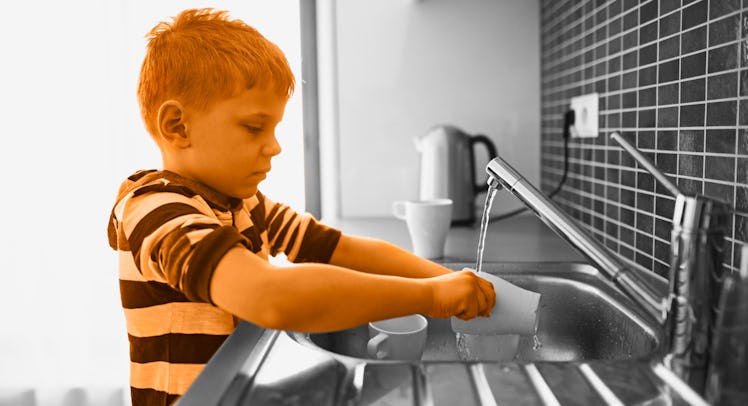How to Teach Kids to Value What They Have
Teaching kids the cost of replacing the toys they neglect can be a lot less painful for parents if they start when the stakes are small.

Three-year-olds generally don’t show any particular interest in the care and maintenance of their possessions. Between gifts and items handed down from relatives, kids can easily be awash in a surplus of riches they don’t particularly appreciate, at least until they are lost or ruined. Teaching them to appreciate and value what they have can get to be a pretty expensive lesson, though; even more so when what’s being ruined is family property like furniture.
READ MORE: The Fatherly Guide to Chores
Starting consumerist questions early, when the stakes are low, helps keep teaching the value of stuff affordable. Before they even really understand money, kids can understand that their time has value, suggests Byron Ellis, CFP, the managing director of United Capital Financial Advisors and a father himself.
How to Teach Kids to Value What They Have
- Use jobs to earn rewards – when kids are very young, small, short jobs with immediate rewards helps them understand that their time is worth money. When they get older, the jobs can take longer, the rewards can be more expensive, and it can take them longer to earn it.
- Use teachable moments and natural consequences – let them experience the natural consequences of neglecting what they already. For the very young, this can be mitigated by arranging a close call.
- Invite them to invest in the family – who says mom and dad have to be the only people who buy the furniture? Smaller kids can help pick out large family purchases, and perhaps get jobs helping take care of it. Older kids can do jobs around the house to help pay for it.
“Really young kids don’t know about money. It doesn’t make any sense to them. But they can easily learn that time is a commodity,” says Ellis. “Offer them something they want, like ice cream, in exchange for an easy job – putting away the stuffed animals. The smaller the kid, the smaller the job, and the reward, whatever it is, has to come quickly, otherwise, they won’t understand the connection.”
As kids get older, the jobs can take longer, the rewards can be higher, and it can take them longer to earn it. This will pay off in adulthood as a strong work ethic. When they’re young, building this connection between time and value may be enough to get kids to appreciate what they have – if they invest time in taking care of it, it must be worth something.
If that isn’t enough, parents can package the natural consequences of neglect in “close calls” that are more palatable to a little kid. If a child leaves their truck outside overnight or leaves a book in a high-traffic area so it is stepped on, a parent might suggest it’s time to donate the item to a charity — starting a conversation about whether the child sees the value in the item anymore. If the kid wants to recover the item, parents should encourage that, using the opportunity to teach what it means to take care of it.
RELATED: The Best Electronic Pets for When You Don’t Want to Raise a Real One
Parents absolutely have the authority and the ability to take items away. But that puts the focus on the behavior of the parent, not the responsibility of the child to care for their items. Packaging it as a close call creates the opportunity for a second chance for the child and a teaching moment for parents. Some kids may not learn from a close call; for them, the natural consequence may be a toy that is damaged or ruined.
Close calls won’t really work on family property – parents may not have the wherewithal to donate a couch, and kids will probably be too amused by the whole situation to actually absorb any lesson. However, there is a way to get kids invested in family property: include them in the purchasing process. They can help pick it out and have small jobs caring for it – dusting a coffee table, straightening throw pillows on a couch, wiping the front of an oven or the dashboard of a car.
And if they don’t feel invested, everybody might wind up actually spending some money. If a child ruins a couch with a permanent marker or sends a ball through a window, they need to feel the consequences of their actions.
MORE: The Best Surprise Egg Toys to Put In Easter Baskets for Kids
“It maybe be unrealistic for them to pay off something they neglected or ruined all by themselves, but they can certainly pay for some of it,” says Ellis. “If they break a window, ruin a piece of furniture, they can work that off by doing work around the house a few hours a week. They need to have some skin in the game.”
It might feel like an expensive lesson to pay for a new couch while a child picks up sticks and weeds the yard to cover ten percent of the cost, but as long as they learn these lessons before they are driving the family car, it’s practically a steal.